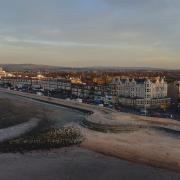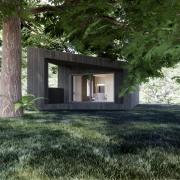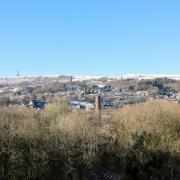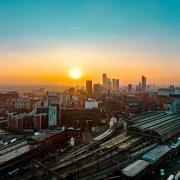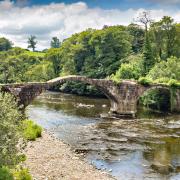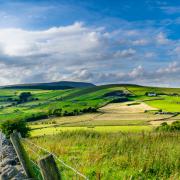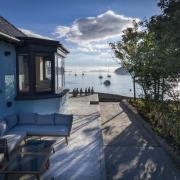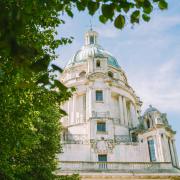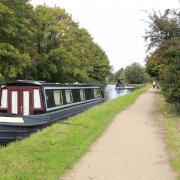The tide turns and spring comes to Formby bringing renewed colour and life.
There’s a gentle south westerly carrying the roar of the tide inland beyond the sand dunes at Lifeboat Road in Formby. Against this wall of solid sound, the thread-thin song of skylarks hangs high in the air to the lee of the dunes, like the scratch of a pin on a block of thick paint.
Twenty miles south in the shelter of the Mersey estuary, hawthorns are already coming into leaf and spring is very clearly on its way. Change is slower here but the coconut-scented yellow gorse blossom is out and welcome.
With the breeze, the tide had seemed so near but the reality is different. From the top of the dunes, the tide is visible but hundreds of yards down the beach, beyond the seaweed and broken shells which mark the highwater line.

Beaches have their own ‘seasons’ and cycles of renewal but their transformations bring treasures too – particularly at Formby. Every few weeks the tide lays bare sets of ancient prints fixed in lagoon mud by the feet of humans and animals thousands of years ago. Like the leaves and blossom of spring, the footprints are on a loop of renewal: revealed, fresh and pristine by the tide before slowly fading and crumbling back into the ground as others appear along the beach.
With the best of prints, you can scrape the salt water and sediment of broken shell from the foot shaped-hollows and trace with your fingers the hardened surface laid smooth by the toes and tendons of the hunter and hunted. Like sliding your hand inside the cold and wet shoes of strangers.
Today, against all odds, and the sheer scale of the surface area of exposed beach, we find one of the small stretches of impacted mud which hide the prints. Even better, there’s a clear sequence of small footprints in the sandy mud. They are in a state of collapse and beyond their best but still a thrill to find.

The plaintive cries of an oystercatcher reach up the beach from the shallows of the Irish Sea as gulls and crows helter skelter down a thermal above the dunes.
This feels like crow country. Back inland beyond the sandbanks and marram grass, a lone crow stands sentinel on top of a rustic sculpture of twisted spars of wood, an eerie silhouette against the grey sky. A few hundred yards south, a small group of crows is playing in the breeze, launching themselves a foot or so into the air from the ground and, without a flicker of wings, letting the wind carry them sideways down a track to where they have found some perfect drinking puddles.
The tidal roar finally disappears amid the oaks, sycamores and birches that line the approach to the pine woods. Heaps of last year’s leaves still line the steep bank by the side of the road but green shoots have pushed their way through.
Among the bare trees, an area of higher ground is speckled with occasional daffodil and clumps of snowdrops. The white petals are still tightly wrapped. The dark sandy pine wood ahead looks lifeless but has attractions of its own: the copper-coloured lichen on a red trunk and the orange/red of newly felled pine logs.

The hardiest of last year’s blackberries and rosehips still cling to the brambles either side of the path and somewhere up high above, a cicada-like sound that may just be the closest we get to Formby’s elusive red squirrels today.
Beyond the woods and asparagus fields a flock of small birds has landed in the upper branches of a sycamore and is chattering loudly. The sudden bark of a dog which has appeared from nowhere scares them, and they’re gone.
Ahead, the open ground starts to feel like heathland. The dunes have not shielded the land from the worst batterings of the coastal weather and the hawthorn that dots the landscape is windblown, sculpted over decades into wedge shaped bushes by the westerly blasts.
Out of reach of the worst of the winds, vibrant coloured lichen has covered the knobbly fingers of another wizened old hawthorn. The unkempt hedgerow continues with young birch branches reaching for the sky and, next to them, ochre-coloured whips of willow.
By accident or by design, they have created a muted but still striking tricolour of green, purple and orange, visible to all those who take a step back – and all those who care to see.




